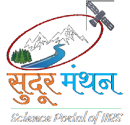Monitoring inland water is crucial for assessing different aspects of the hydrological cycle, as well as environmental and atmospheric processes within the Earth system. Understanding hydrological processes and managing water resources and ecosystem balance depend greatly on tracking changes in water levels. Traditionally, water levels have been observed using in-situ gauging stations; however, the global network of these stations is limited due to costs, accessibility challenges, and economic and political factors. Moreover, the number of global in-situ stations has decreased over the past few decades. Consequently, there has been a growing reliance on satellite observations for monitoring water levels worldwide. Over the last 30 years, satellite radar altimetry has proven to be a valuable method for collecting water surface elevation data.
The recently launched Surface Water and Ocean Topography (SWOT) mission (December 15, 2022), provides global measurements of water surface elevation, river width, and slope. A team of Scientists at IIRS Dehradun calculated the continuous water heights along the Ganga River stretch using SWOT Ka-band Radar Interferometers (KaRIns) data acquired on April 24, 2023. The study has shown a clear variation in elevation change from the main river channel to the floodplain is evident upon visual inspection near Varanasi City. The SWOT measurements brings various benefits over altimetry mission such as:
- Comprehensive global spatial-temporal coverage of continental water surfaces;
- Two-dimensional water surface elevation;
- Monitoring water levels across entire river reaches;
- Concurrent collection of water level, water surface slope, and river width data.

2D water surface elevation (WSE) data along the Ganga River from SWOT, (b) 2D WSE data near Varanasi City, and (c) the area near Varanasi City captured in a LISS-IV false colour composite (FCC) image dated November 21, 2023.
Further, these derived hydrodynamic parameters can be used to estimate river discharge using various algorithms. IIRS has conducted extensive field survey over Ganga River to evaluate these satellite observations. For further details, kindly follow recently published work “River Water Level and Water Surface Slope Measurement from Spaceborne Radar and LiDAR Altimetry: Evaluation and Implications for Hydrological Studies in the Ganga River,” in IEEE Journal of Selected Topics in Applied Earth Observations and Remote Sensing”.
References:
Biancamaria, S., Lettenmaier, D. P., & Pavelsky, T. M. (2016). The SWOT Mission and Its Capabilities for Land Hydrology. Surveys in Geophysics. https://doi.org/10.1007/s10712-015-9346-y
Durand, Michael, Gleason, C. J., Pavelsky, T. M., Prata de Moraes Frasson, R., Turmon, M., David, C. H., et al. (2023). A Framework for Estimating Global River Discharge From the Surface Water and Ocean Topography Satellite Mission. Water Resources Research, 59(4). https://doi.org/10.1029/2021WR031614
Dhote, P.R., Agarwal, A., Singhal, G., Calmant, S., Thakur, P.K., Oubanas, H., Paris, A., Singh R.P. 2024.”River Water Level and Water Surface Slope Measurement From Spaceborne Radar and LiDAR Altimetry: Evaluation and Implications for Hydrological Studies in the Ganga River,” in IEEE Journal of Selected Topics in Applied Earth Observations and Remote Sensing, vol. 17, pp. 7825-7840, 2024, https://doi.org/10.1109/jstars.2024.3379874.
Dhote, P. R., Thakur, P. K., Domeneghetti, A., Chouksey, A., Garg, V., Aggarwal, S. P., & Chauhan, P. (2021). The use of SARAL/AltiKa altimeter measurements for multi-site hydrodynamic model validation and rating curves estimation: An application to Brahmaputra River. Advances in Space Research, 68(2), 691–702. https://doi.org/10.1016/j.asr.2020.05.012



